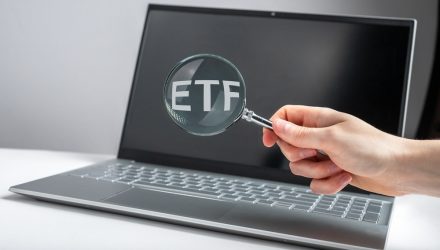U.S. bond exchange traded fund trading volumes have surged to record highs as more investors turned to the nifty investment vehicle to access the fixed-income markets ahead of the Federal Reserve’s monetary policy decision.
U.S. fixed-income ETF turnover rates hit $58 billion on June 13, a single-day record that surpassed the previous record of $53 billion back in March 2020 when the financial markets plunged at the onset of the COVID-19 pandemic, the Financial Times reported.
“The record volume is a sign that investors are increasingly using fixed-income ETFs as their vehicle of choice during times of market stress,” Todd Rosenbluth, head of research at VettaFi, told the Financial Times.
Yields on two-year U.S. Treasuries have increased amid the renewed trading frenzy in fixed-income markets, bringing the rise in yields so far this year to 252 basis points and reflecting the ongoing shift in investors’ expectations over the Fed’s monetary policy tightening outlook.
Among the most popular fixed-income ETF trades, the iShares iBoxx $ High Yield Corp Bond ETF (HYG) saw $9 billion worth of trades on June 13, or more than double its daily average trading volume for the past 20 trading days, while the SPDR Bloomberg Barclays High Yield Bond ETF (JNK) registered a record $4 billion for the same day.
“Trading volumes have increased across ETFs as markets have become more volatile. It reflects investors’ desire to source liquidity via ETFs as they adjust portfolios to the reality of an aggressive Fed,” Matthew Bartolini, head of SPDR Americas research at State Street Global Advisors, told the Financial Times.
However, large discrepancies also appeared in the prices of some fixed-income ETFs compared to the underlying value of their constituent bonds. The results may reflect the greater demand for using ETFs as a trading vehicle, compared to the underlying debt securities.
“Not every high-yield bond trades every day or with the same frequency as a fixed income ETF. So the net asset value of a bond can be more stale than the price of the ETF, particularly given the rapid changes in the bond market,” Rosenbluth added.
The overall activity is reflective of the increased usage and popularity of fixed-income ETFs, along with ongoing investor trends.
“Credit ETF prices are often a leading indicator for the [rest of the] bond market. In times of market stress, bond ETFs have consistently provided price discovery and the ability for investors to express their differing investment views in real time,” Carolyn Weinberg, global head of product for iShares and index investments at BlackRock, told the Financial Times.
For more news, information, and strategy, visit VettaFi.
